The biggest farm machinery launches of 2022
There was no shortage of noteworthy new machines this year, some of which will be making their debut at Lamma in 2023.
Here is a round-up of the biggest launches of tractors, combines and grasskit of 2022. We also look at a long-awaited 4×4 and some autonomous machines.
See also: Top 10 best-selling tractor brands in the UK revealed
January
John Deere autonomous tractor
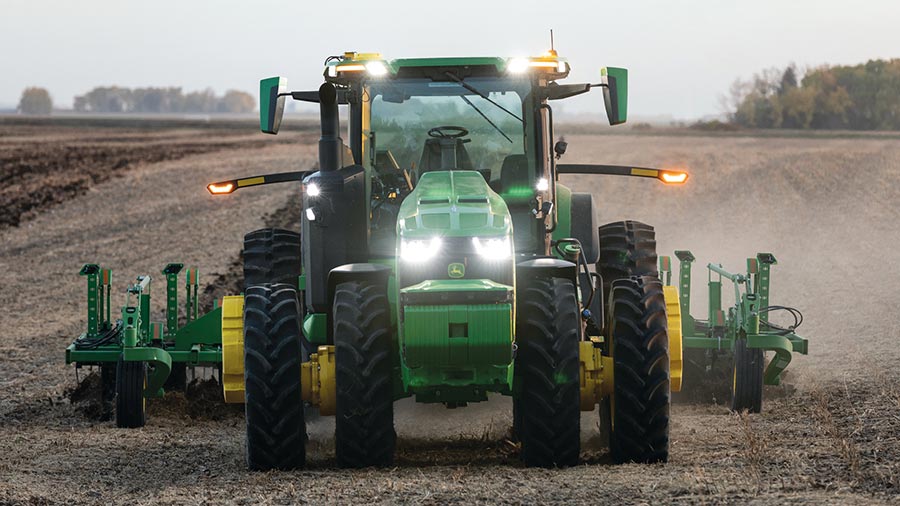
© John Deere
Several years of trials in the US came to a head when John Deere announced that its fully autonomous 8R tractor was ready for large-scale production.
The tractor is the first of its kind from the US manufacturer, and functions without a driver thanks to its sophisticated monitoring system.
This comprises six pairs of stereo cameras that give a 360deg view to determine the distance to any obstacles.
According to Deere, the driverless technology is an evolution of its well-established and widely used AutoTrac system.
The main difference is the addition of a neural network that processes the images, analysing individual pixels in roughly 100 milliseconds.
The tractor can be monitored from a smartphone, which will receive a live-feed of the tractor’s in-field position.
Kubota M6-001

© Kubota
A rebranding exercise saw Kubota’s long-standing MGX tractors replaced by the M6-001 Utility series, which slots into the 104-143hp segment between the smaller M5-002 and higher-spec M6-002.
Improvements centre on the exhaust after-treatment system, with particulate filter regeneration able to take place at lower engine revs – about 1,200rpm – and at a temperature of 50C.
As before, the 2.54m short-wheelbase options (the M6-101U and M6-111U) both come with Kubota’s four-cylinder, 3.8-litre engine that develops 104hp/346Nm or 111hp/379Nm, and have a hydraulic output of 71 litres/min.
For the 2.68m long-wheelbase models, Kubota’s 6.1-litre engine pushes out 123hp/503Nm (M6-121U), 133hp/544Nm (M6-131U) or 143hp/586Nm (M6-141U), with the hydraulic pump rated to 77 litres/min.
February
Deutz-Fahr 6C

© Deutz-Fahr
Deutz-Fahr ushered in a new three-strong range of tractors to replace its existing 6120, 6130 and 6140, with the trio nestling between the firm’s 5 and 6 series machines.
The “C” designation reflects the new models’ more compact dimensions, with the 6115C, 6125C and 6135C spanning 126hp to 143hp, all fitted with a four-cylinder, 3.6-litre Deutz engine.
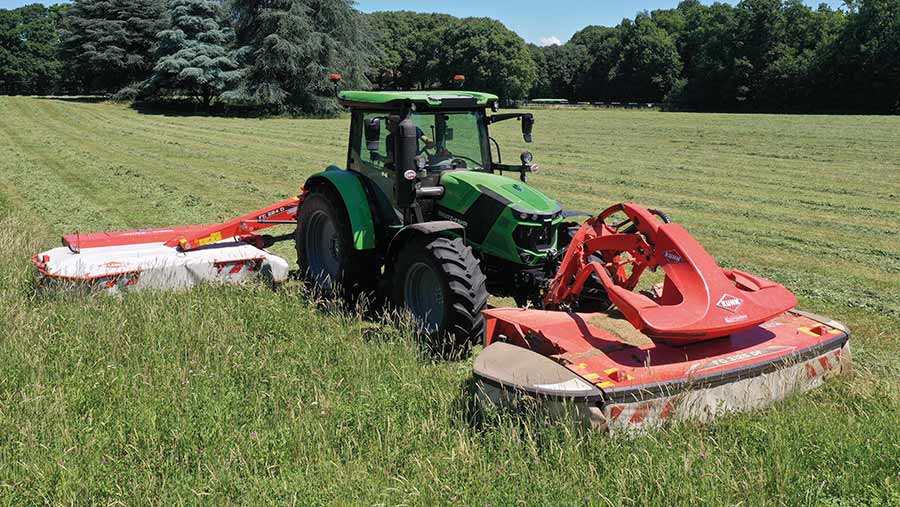
© Deutz-Fahr
The shift to Stage 5 emissions compliance was the main driver behind the launch, but the maker also took the opportunity to introduce its RV Shift transmission – a full-powershift gearbox with 20 forward and 16 reverse gears.
This has two modes, work and transport, that operate within a predetermined range of gears to streamline the transition from road to field.
Lift capacity is 7t, the hydraulics can serve up either 90 litres/min or 120 litres/min, and Stoll-made front loaders can be factory fitted in Deutz’s distinctive apple green livery.
April
Krone and Lemken Combined Powers
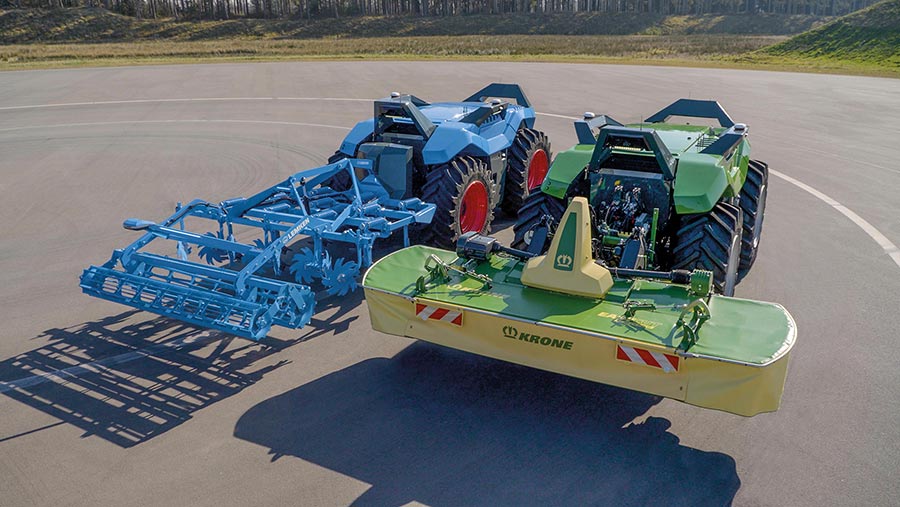
© Krone and Lemken
The self-proclaimed “Combined Powers” of Krone and Lemken came together to produce an autonomous, tractor-like “process unit” powered by a diesel-electric engine.
The machine can produce up to 230hp and has no gearbox, with electric motors instead powering the wheels and pto shaft.
It has so far passed trials in cultivating, ploughing, drilling, mowing, tedding and raking, using both Lemken and Krone implements attached via a conventional three-point linkage.
Driverless operation is supported by a series of sensors that can detect objects and obstacles, and also monitor the attached implement.
This is overseen by an operator who can transfer job reports and control the machine via a mobile device.
New Holland Pro-Belt variable-chamber baler

© New Holland
New Holland extended its line-up of variable-chamber balers with the addition of the premium Pro-Belt models.
Sitting above the existing Roll-Belt 150 and 180, they weigh 20% more than their predecessors, despite carrying the same 2.35m-wide pick-up.
New Holland says stronger components and fewer moving parts – including larger rollers, bearings and sprockets, and a reduced number of chains – have made the new range more durable and reliable.
Output is a claimed 30t/hour, and the Pro-Belts are said to produce more uniform, denser bales.
The premium models also benefit from Isobus compatibility, an automatic greasing system, a moisture meter, and the option of larger tyres.
Opico FarmDroid

© MAG/Matilda Bovington
April saw Lincolnshire-based importer Opico take on distribution of the Danish-made autonomous FarmDroid robot.
Powered by solar panels that feed a pair of lithium-ion batteries, the FarmDroid sows seeds and records their exact placement so that it can weed around them.
It works at a sedate 900m/hour – roughly 6ha/day – and can operate continuously until its charge runs down.
The firm says the ability to remove competitive weeds at an early stage can improve yields by up to 40%, which can equate to a return on investment of roughly two years.
There are currently more than 250 FarmDroids operating across the globe, with a handful in the UK.
May
JCB Fastrac

© JCB
JCB’s Fastrac was brought up to date with a suite of new cab controls.
Available on all five 4000- and 8000-series models, the iCON update involves a newly designed armrest console, joystick and 12in touchscreen with integrated Isobus and guidance.
Everything from spool settings and vehicle information to guidance and camera feeds can be accessed, programmed and viewed from the screen, and storage capacity for headland turn sequences has been increased.
Other creature comforts include automatic climate control, more storage space and a heated and ventilated driver’s seat.
June
Kverneland mergers

© Geoff Ashcroft
ROC’s yellow mergers debuted on Kverneland’s stand at the Scotgrass show following its acquisition of the Italian firm last year.
This means six merger brands are now available in the UK, providing an alternative to the four-rotor rake for grassland farmers looking to minimise stone contamination in the swath.
The largest of the three ROC machines at Scotgrass was the 8.85m-wide RT 880 with its six-bar pick-up, although Kverneland expects demand in the UK will focus on the wider 12.2m RT 1220.
Valtra Q-series
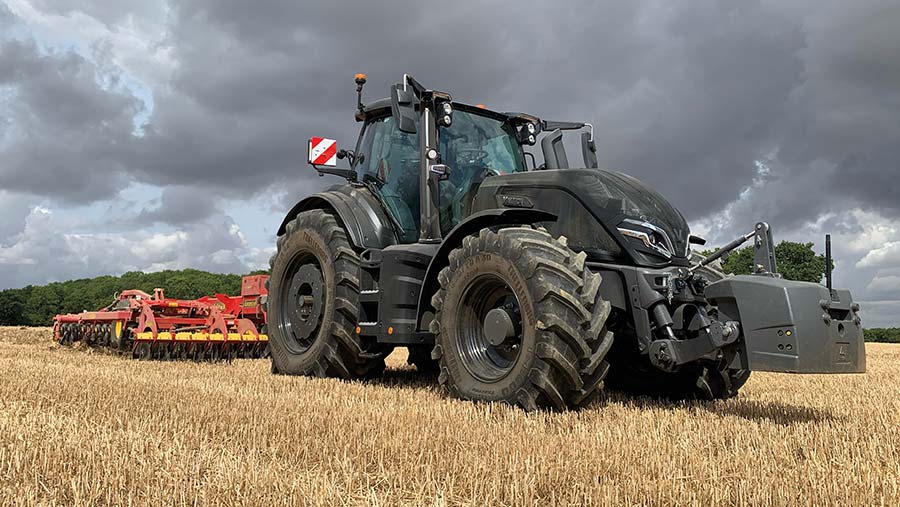
© Seth Bradford
Valtra’s new range of Q-series tractors entered a hotly contested sector, with demand intensifying for machines around the 250hp mark.
Sitting between the existing T and S models, the five tractors span 230hp to 305hp and come with Agco’s Vario ML270 CVT transmission.
They have the same cab and 7.4-litre Agco Power engine as the T series, updated with the addition of an A-pillar display, better lighting and improved controls.
July
Massey Ferguson Activa combines

© Massey Ferguson
Massey Ferguson added a trio of entry-level combines to its Activa range.
The new five-walker machines – the 7344, mid-size 7343, and smaller 7342 – develop 260hp, 226hp, and 185hp, respectively, with the larger two sharing the same 7.4-litre six-cylinder Agco Power engine.
The firm’s Powerflow header can be specced in sizes from 5.5m to 6.2m on the two biggest variants, while the base model gets a simpler Freeflow table, available in widths from 4.8m to 6m.
All three have the same drum dimensions – 600mm diameter and 1,340mm width – while grain tank capacities range from 5,200 litres to 6,500 litres.
Volkswagen Amarok

© Volkswagen
Volkswagen finally released details of its long-awaited Amarok pickup, which is being built in South Africa in the same factory as Ford’s new Ranger.
The range-topper comes with a 3-litre V6 diesel engine, tuned to deliver 247hp and 600Nm, although buyers keen to prioritise economy have the option of a 2-litre four-cylinder in either single or bi-turbo guise, developing 168hp and 206hp, respectively.
VW will kit out all models above 206hp with a 10-speed automatic gearbox, while those below this power band come with the choice of a six-speed manual or automatic.
Other new features include a towing capacity increased to 3.5t, a 96mm-longer chassis, an improved 800mm wading depth and more legroom in the cab.
August
Claas Lexion updates
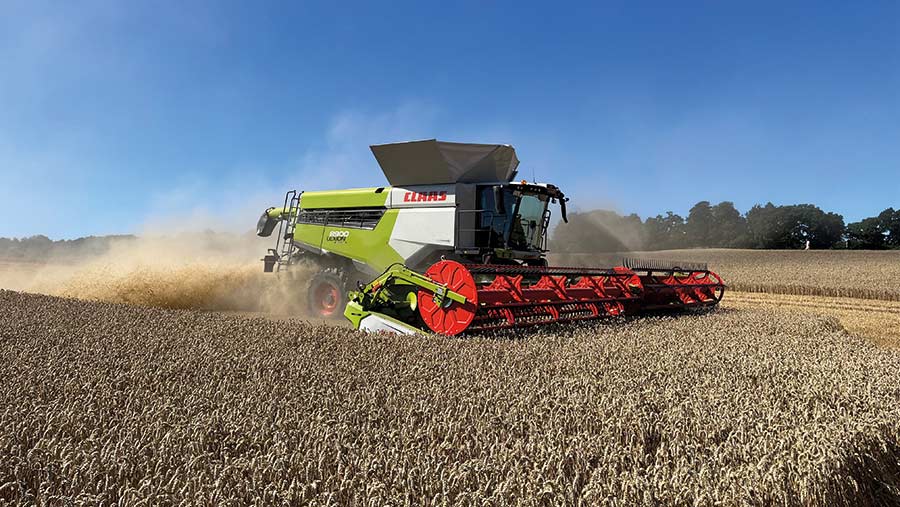
© MAG/Matilda Bovingdon
A clutch of models joined the flagship Claas Lexion combine range in August, bringing with them a bigger, better-equipped cab.
The first of these is the 8600, which becomes the smallest of the firm’s 8000-series hybrid machines.
It gets a 1,700mm drum and 12,500-litre grain tank, while power is provided by a 12.4-litre, six-cylinder MAN D26 engine developing 549hp.
The 8700 and 8800 models have also received a power hike, up 41hp to 626hp and 47hp to 700hp, respectively.
In the case of the 8800, this is provided by a 16.2-litre MAN D42 power plant, as used in the range-topping 790hp 8900.
All get a new cab, first seen on the Trion models, which offers more space, larger front and side windows, a 12in terminal, 30deg rotating seat and optional “dynamic steering” functions.
September
Fendt 700 Vario
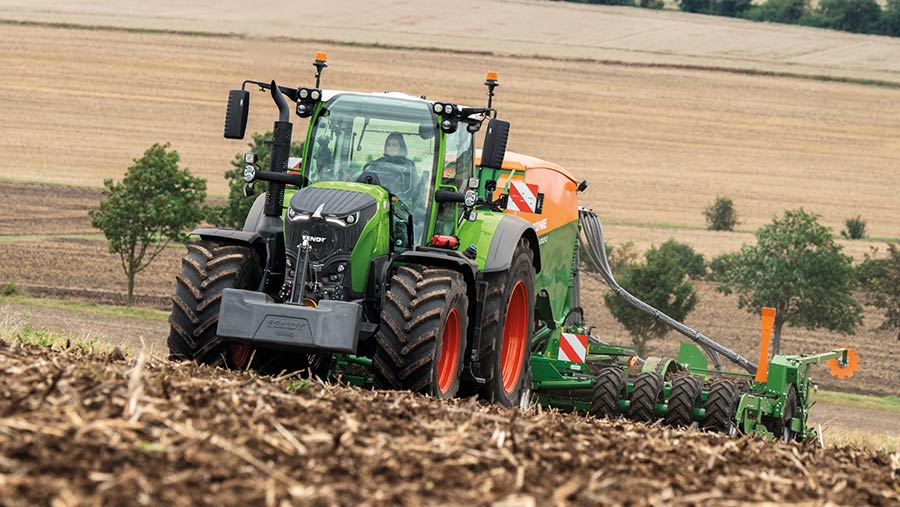
© Fendt
Fendt welcomed a bigger, more powerful 700-series to its line-up, with an Agco Power engine replacing the old Deutz block to push them deeper into 800-series territory.
The five new Gen7 machines, from the 203hp 720 through to the 300hp-plus 728, have had a chassis rejig to accommodate the 7.5-litre engine, resulting in a 2.9m wheelbase that’s just 5cm shorter than the larger 800 models.
The cab – which was first unveiled for the current 700 series two years ago – remains the same, with the updated multifunction joystick, 10in digital dash and a 12in terminal on the armrest as standard.
Unique to the Gen7 700s, the VisioPlus cab can be upgraded to give Category 4 protection against dust, aerosols and vapours.
This is set to be available from the end of 2023 and will most likely appeal to those using mounted or trailed sprayers.
Krone Big X foragers

© Krone
Growing demand for forage harvesters with outputs around the 1,000hp mark saw Krone expand its range with a brace of new models.
The Big X 980 and Big X 1080 are powered by the same V12 Liebherr engine used in the 1156hp 1180 model.
They have a modified Power Split facility which gives operators the option of selecting “eco-power” mode for better fuel economy or “X Power” to engage the engine’s full output.
Also available on the new models is the firm’s “XtraPower” system, which allows engine power to be temporarily boosted to overcome challenging harvesting conditions.
November
Case IH Puma 260 and New Holland T7.300
CNH brands Case IH and New Holland revealed new models at the top of their Puma and T7 ranges.
The Puma 260 and T7.300 have a maximum power of 280hp, which boosts to 300hp for pto work and haulage, plus stronger axles and bigger tyres than the rest of their respective line-ups.
But the highlights are their new cabs, with 7.5% more internal space, a wider door opening and a curvier front windscreen to let in more light – plus better sound deadening to keep noise to a serene 66dBa.
They also gain a new cab suspension system, improved climate control with more powerful fans, and a high-tech control layout featuring a bigger monitor with better graphics.

